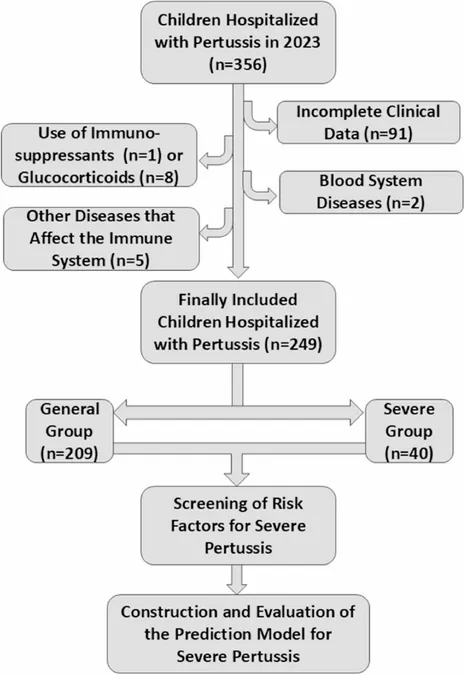
Unlocking Severe Pertussis in Kids: The Revolutionary Prediction Tool You Need to Know
2025-07-29
Author: Wei
Pertussis, commonly known as whooping cough, remains a dangerous global health threat, particularly for infants and young children. This preventable disease, caused by the bacterium Bordetella pertussis, ranks among the top causes of vaccine-preventable deaths worldwide. Despite advances in vaccination, recent data reveals a resurgence in cases, surpassing pre-pandemic numbers.
Infants under five, especially those under six months old, are the most vulnerable, facing severe consequences from this illness. Factors like incomplete vaccinations and living in rural areas increase the likelihood of severe outcomes. The issue is compounded by the waning immunity associated with the currently used acellular pertussis vaccine.
Recognizing the rising severity of pertussis cases in children, researchers have identified multiple factors contributing to this trend. A recent study conducted in Tianjin, China, developed an innovative prediction model—a nomogram—designed to identify children at high risk for severe pertussis much earlier in their treatment.
The study analyzed 356 children with pertussis, finding that factors like low birth weight, early exposure to infections, and delays in vaccination significantly raised the risk of developing severe disease. This groundbreaking research not only focuses on clinical features but delves into the immunological responses associated with severe cases.
What makes this nomogram groundbreaking is its integration of both clinical and immunological predictors, ranging from lymphocyte counts to vaccination history. The goal is to empower healthcare providers with a reliable tool to forecast who might face the most severe outcomes, enabling timely intervention.
The statistics from the study are staggering; the predictive model achieved a remarkable 97.5% sensitivity in identifying severe cases, highlighting its potential to save lives by prompting earlier and possibly life-saving treatments.
The importance of adhering to vaccination schedules cannot be overstated, especially in rural areas where healthcare access is limited. This nomogram offers a practical risk assessment tool that can reshape how clinicians manage pertussis, heightening awareness within communities and ultimately guiding public health strategies.
This research not only sheds light on the critical factors contributing to severe pertussis but also emphasizes the urgent need for ongoing investigations into immune responses. As clinicians adopt this model in practice, they can better navigate the complexities of pertussis treatment and drastically enhance patient care.
With more studies planned, including those targeting the dynamic presence of immune cells, the hope is to refine these tools further. This development stands as a promising beacon in the fight against pertussis, reminding us of the powerful role preventative healthcare can play in safeguarding future generations.


 Brasil (PT)
Brasil (PT)
 Canada (EN)
Canada (EN)
 Chile (ES)
Chile (ES)
 Česko (CS)
Česko (CS)
 대한민국 (KO)
대한민국 (KO)
 España (ES)
España (ES)
 France (FR)
France (FR)
 Hong Kong (EN)
Hong Kong (EN)
 Italia (IT)
Italia (IT)
 日本 (JA)
日本 (JA)
 Magyarország (HU)
Magyarország (HU)
 Norge (NO)
Norge (NO)
 Polska (PL)
Polska (PL)
 Schweiz (DE)
Schweiz (DE)
 Singapore (EN)
Singapore (EN)
 Sverige (SV)
Sverige (SV)
 Suomi (FI)
Suomi (FI)
 Türkiye (TR)
Türkiye (TR)
 الإمارات العربية المتحدة (AR)
الإمارات العربية المتحدة (AR)